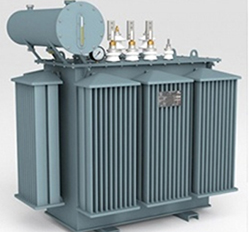Call us Now: +91 8447498882, +91 9811110632
Transformer Oil
TRANSFORMER OIL ANALYSIS (Accredited by ISO 17025) — An essential part of preventative maintenance
Transformers can self-destruct if neglected over time and failure to conduct regular transformer oil testing can allow problems to go undetected.
Rajasthan: Transformer blast kills 11, injures 22 in Jaipur ...
Oct 31, 2017 - Eleven persons have been killed and 22 injured when a transformer exploded near a marriage function in Khatloi village in Shahpura near Jaipur on Tuesday. Among the deceased is an unborn child whose mother was seriously injured and was operated upon to save her and the baby.
Fire in 220kV substation, Bengaluru's power centres feel the ...
A major fire broke after a transformer blast at the 220kv substation near Anand Rao Circle in Bengaluru on Monday
Transformer blasts, half Bengaluru in dark
KPTCL MD N Manjula told TNIE that the breaker had an inherent fault which led to the blast.

Oil Diagnostic Tests :
At SAL we offer a wide range of analytical specification tests, coupled with expert interpretation and reporting systems. Typical testing on transformer units includes:
- Dissolved Gas Analysis (DGA)
- Water Content (Moisture)
- Interfacial Tension (IFT)
- Color & Appearance
- Neutralization number
- Breakdown Voltage Strength
- Acidity
- Viscosity
- Flash Point
- Specific Resistance (Resistivity)
- Furan Analysis (Paper Insulation Assessment)
- Dissipation Factor (Power Factor)
- Density (Specific Gravity)
- Sediments and Sludge
Transformer oil holds critical information on the condition of the transformer from thermal and electrical faults to contamination and degradation of the oil. Without monitoring, these conditions can take a toll on the life of a transformer.
Regular testing and repairing result in substantially increased lifespan of a transformer, thus delaying replacement of transformer assets. Preventative measures taken against these issues will help keep your electrical system running smoothly to give you maximum uptime.
Key benefits of Transformer Oil Analysis
- Assesses the internal condition of the transformer
- Identifies degradation before it leads to failure
- Allows testing to be done at low cost
- Helps calculate the probability of failure and end-of-life
- It is essential for effective maintenance and replacement strategies
- Offers excellent return on investment

The quality of the analysis is as good as the sample drawn. We offer a complete portfolio of services for used transformer oil clients including on-site services, analytical testing, data analysis & reporting, and advisory and consulting services.
TRANSFORMER OIL ANALYSIS — An essential part of preventative maintenance
Regular transformer oil analysis is useful in monitoring the condition of engines, turbines and other oil lubricated equipment. The same can be said for transformer oils used to insulate many transformers and other electrical distribution equipment. The analysis of insulating oils provides information about the oil, but also enables the detection of other possible problems, including contact arcing, aging insulating paper and other latent faults and is an indispensable part of a cost-efficient electrical maintenance program.

Transformer Reliability
Over the past 20 years “Just in time delivery” has changed Preventative maintenance from a necessary item of expenditure to a strategic tool in managing your production. Extreme reliability is demanded of electric power distribution equipment, and even though the failure risk of a transformer and other oil-filled electrical equipment is small, when failures occur, they inevitably lead to high repair costs, long downtime and possible safety risks.
By measuring the physical and chemical properties of oil, in addition to the concentrations of certain dissolved gases, a number of problem conditions associated with either the oil or the transformer can be determined and down time can potentially be avoided. The following are some common tests performed on electrical insulating oils.
Moisture Content
One of the most important functions of transformer oil is to provide electrical insulation. Any increase in moisture content can reduce the insulating properties of the oil, This is of particular importance with fluctuating temperatures because, as the transformer cools down, any dissolved water will become free, which results in poor insulating power.
Acid Number
Transformer oils are oxidized under the influence of excessive temperature and oxygen, this results in an increase in Acid Number, due to the formation of carboxylic acids. Further oxidization can result in sludge and varnish deposits. In the worst-case scenario, the oil canals become blocked and the transformer is not cooled well. Oil degradation also produces acids, which tend to reduce the insulating properties of the oil. An increase in Acid Number often goes hand-in-hand with a decrease in dielectric strength and increased moisture content.
Dielectric Strength
The dielectric strength of transformer oil is defined as the maximum voltage that can be applied across the fluid without electrical breakdown. Because transformer oils are designed to provide electrical insulation, any significant reduction in the dielectric strength may indicate that the oil is no longer capable of performing this vital function.
Power Factor
The power factor of insulating oil is the ratio of true power to apparent power. In a transformer, a high power factor is an indication of significant power loss in the insulating oil, usually as a result of contaminants such as water, oxidized oil and cellulose paper degradation.
Dissolved Gas Analysis (DGA)
Dissolved gas analysis (often referred to as DGA), is used to determine the concentrations of certain gases in the oil such as nitrogen, oxygen, carbon monoxide, carbon dioxide, hydrogen, methane, ethane, ethylene and acetylene. The concentrations and relative ratios of these gases can be used to diagnose certain operational problems with the transformer. For example, high levels of carbon monoxide may indicate thermal breakdown of cellulose paper, while high hydrogen, in conjunction with methane may indicate a corona discharge within the transformer.
Furans
Furan derivatives are a measure of the degradation of cellulose paper. When the paper ages its degree of polymerization reduces, so its mechanical strength decreases. The degree of polymerization can only be determined directly by taking a sample of paper, a very complex operation and almost never performed in practice. However, the degree of polymerization of the paper can be directly related to the concentration of furan derivatives in the oil.
Just like machinery oil analysis, electrical insulating oil analysis can play a vital role in preventing unscheduled outages in electrical distribution equipment by determining the condition of the equipment itself, and other vital components including the condition of the oil and the cellulose paper insulation. For all critical oil-filled electrical equipment, including transformers, regular, routine oil analysis should be the cornerstone of any PM program.
Dielectric strength
Dielectric is a measure of the electric strength of a material as an insulator. Dielectric strength defined as the maximum voltage required to produce a dielectric breakdown through tha material is expressed as volts per unit thickness.
Flash point
The flash point of a volatile material is the lowest temperature at which vapour of the material will ignite when given an ignition source. The flash point is a descriptive character that is used to distinguish between flammable liquid.


